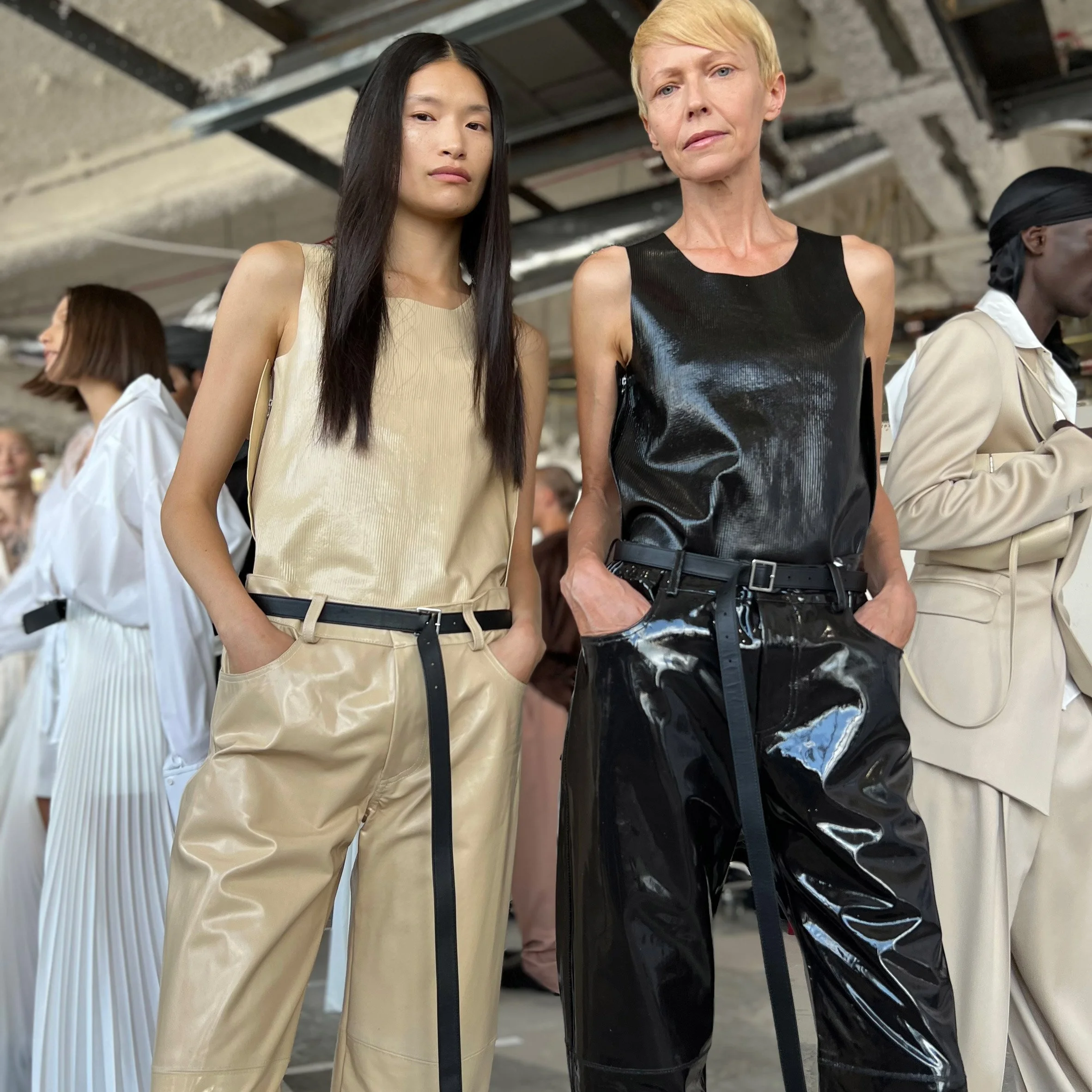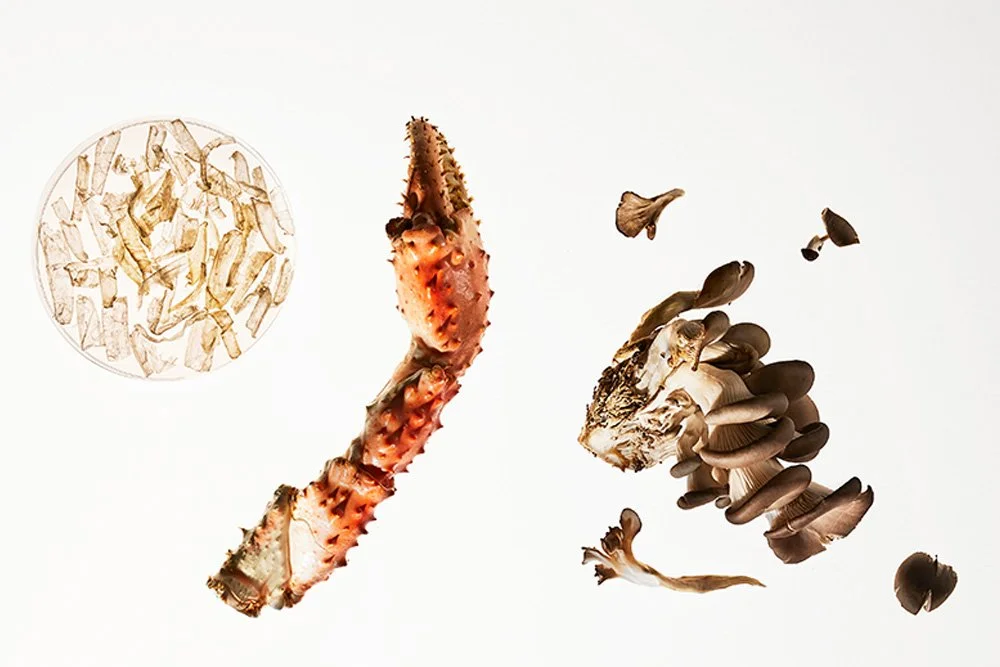Trash is the New Black
On a beautiful autumnal Sunday afternoon in Paris, everything seemed to be back to normal as if the busyness of fashion week had never occurred. The ambiance was quite tranquil and harmonized with radiating sunshine and the chill from occasional mysterious breezes. I was comfortably enjoying a glass of Sancerre at a bistro by the Seine alone. My hobby is observing people because I adore guessing and analyzing their characters, psychology, and stories through their patterns of behavior and facial expressions. Everything was happening in front of me in the blink of an eye as short films. Suddenly, I saw two impressive-looking women passing by each other--one looked fashionable from her Dior sunglasses to Autumn Winter 2022 Chloé dress--the other looked stylish from her vintage Chanel micro crossbody to a well-made oversized white dress shirt by a local brand in Paris, named Bourrienne. To some extent, a person with taste is someone who comprehends their style and develops it. Of course, a stylish person can choose to be fashionable. Whereas, a fashionable person cannot choose to be stylish because it is a journey of knowing what they want and finding who they are. The confidence in stylishness, therefore, becomes more profound since the awareness doesn't stop at trends but furthers recognition of the significance of style and sustainability. Hence, how important and impactful is sustainable fashion to our planet?
Glamorously known for the second dirtiest industry on earth, fashion, per se, emits up to 10% of all humanity's carbon dioxide--more than international flights and shipping alone--and is the second highest consumer of the world's water supply (1). Not only that, more than two billion animals are maltreated in the global fashion industry for wool, fur, and leather products every year (2). Fashion has suffered accumulated unpayable debts to the environment. These toxic debts are a consequence of a myriad of factors, encompassing overproduction, overconsumption, waste, etc. How has this multibillion dollar industry begun to take action in order to address this threatening scenario?
Last month, I was invited to a fashion event of a world-renowned brand. During the presentation, they introduced their clothing line made from recycled plastics. In the mind of a fashion enthusiast since childhood, educated at a world-leading fashion university at the Fashion Institute of Technology in New York for fashion business management and ethics & sustainability, accumulating diverse experience in this industry in New York and Paris, and having a mindset to bring positive change to the world, many questions popped up in my head:
“Where do you harvest used plastic bottles because in Vietnam it is not really possible to recycle plastics entirely?”
“We harvest and sort the plastics in Japan and make it into pellets and recycle them into fiber then yarn, and ship it to Vietnam to generate the finished product.”
At that moment, I thought that the distance from Japan to Vietnam caused an enormous carbon footprint. But the actual problem is that the undeveloped and developing nations are possessing high amounts of waste that are not being treated well, including Vietnam, where fashion brands regard it as a mass production place and a landfill. Not only that, there are other heart-breaking crises in the fashion industry related to human rights, animal welfare, climate change, etc. After getting more information from the brand and researching, it was understandable for them not to collect used plastic bottles in Vietnam because the plastic recycling factory in Vietnam, at that point, had not had enough ability yet to produce recycled fashion fiber.
Yearly, Vietnam has more than 3 million tons of plastic waste, equaling up to a potential 3 billion USD income source (3; 5). At one of the first official plastic recycling plants in Vietnam, it was able to recycle 22,000 tons of PET plastic in 2020-2021 and is pushing to 100,000 tons of PP and HDPE plastic in 2023-2024, which can be utilized for furniture, garments, and so on (4). These are certainly respectable and positive numbers. Nevertheless, they are still very small compared to 3 million tons. Besides, I recalled the other fashion campaigns collecting discarded plastic bottles from the oceans and recycling them into shoes, clothes, etc. In addition to recycling plastic, numerous fashion brands from luxury to fast have had different strategies to accordingly raise people's awareness of sustainable fashion. For example, nowadays, many fashion products are made from more innovative and biodegradable materials such as mushrooms, seaweed, and shells from crustaceans like shrimp and crabs, etc. Equally important, Prada donates revenue from their Re-Nylon product line to create the inspirational educational program “Sea Beyond” with IOC-UNESCO, which is for global high school students worldwide in order to select a winning environmental campaign from schools to raise awareness directly, especially the following generation. These are the masterpieces that modernity can bring.
Although perhaps it’s not truly essential to have analyzed yet whether these actions are greenwashing, these steps make us think and form awareness. Prior to making any purchases, an intelligent consumer will learn more about the brand, such as how that product is produced and how the brand particularly controls its product life cycle. At the street corners of multiple cities around the world, there are recycling bins dedicated to fashion waste. Also, thrift/vintage stores are extremely popular. When I worked at major luxury fashion organizations, especially in the winter, they organized charity activities to donate clothes and shoes to the less fortunate.
From the point of view of a fashion and environmental enthusiast, trash is the new black. It not only has profound value but also emphasizes the urgency of protecting the environment and turning sustainability into a lifestyle and culture. My mission is to improve the transformation of the fashion environment in the most artistic way through marketing and communications. Awareness is the first and most important step to discerning change. Currently, we have had local fashion brands in Vietnam that are doing amazing jobs and following the world's objectives. For instance, they reuse/upcycle scrap fabrics to create beautiful products--transforming the worthless into the valuable--that's a beautiful mindset and an art. I would like the world to not see the Vietnamese fashion industry as a world's textile factory that can make 45 billion USD in exports (6). But they will also recognize that our industry has a significantly positive impact on the world, not just only economically but also culturally, artfully, and sustainably. Without the environment, fashion is nothing. So what do you think about the two girls above and how will you make small yet impactful steps to a sustainable lifestyle?
References
https://www.bloomberg.com/graphics/2022-fashion-industry-environmental-impact/
https://vnexpress.net/viet-nam-lang-phi-3-ty-usd-do-khong-tai-che-nhua-4487973.html
https://vneconomy.vn/nha-may-nhua-tai-che-duy-tan-day-manh-hoat-dong-trong-nam-2022.htm
https://vnexpress.net/viet-nam-thai-3-1-trieu-tan-rac-thai-nhua-ra-moi-truong-moi-nam-4491989.html



